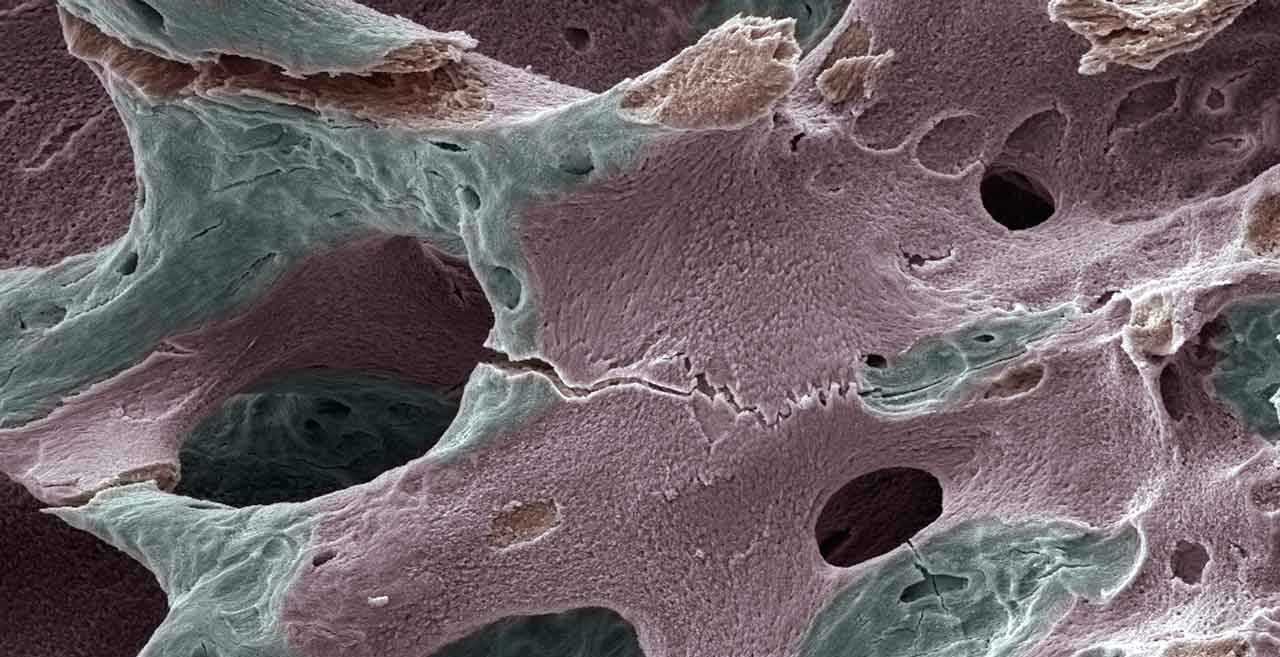Bone Loss May Be an Early Sign of Alzheimer's

A simple bone density scan may eventually show who is at risk for developing dementia, as reduced bone mineral density may be one of the early signs of Alzheimer's.
Alzheimer’s disease, or AD, is the most common form of dementia. It often begins with mild memory loss and cognitive impairment. Advanced Alzheimer’s, however, destroys a person’s ability to reason, remember, and make decisions, eventually becoming so severe that patients can no longer care for themselves.
When a person develops AD, cells known as beta-amyloid and tau proteins begin to form abnormal deposits throughout their brain, clogging nerve receptors and causing the decreased cognitive function that characterizes advanced Alzheimer’s disease.
YOU MIGHT ALSO LIKE: When to Worry About Memory Loss
The damage Alzheimer's causes
Much of Alzheimer’s research focuses on identifying changes in beta-amyloid and tau proteins before they begin damaging the brain. This research affects millions of lives: Alzheimer’s disease is the sixth leading cause of death among adults in the United States, according to the Centers for Disease Control and Prevention. It is the fifth leading cause of death for adults between 65 and 85 years old, and in 2013 an estimated 5 million Americans suffered from AD.
But scientists still haven’t figured out what causes it.
Age is the biggest risk factor, with most cases occurring in people over the age of 60, but young people can develop AD as well. Family history and genetics may play some role, but fewer than 5 percent of cases have a clear genetic cause.
As a result, it is nearly impossible for doctors to say who will develop AD before they begin showing symptoms.
An early sign of Alzheimer's?
Published in the Journal of Alzheimer’s Disease, researchers have found that reduced bone mineral density may be one of the earliest warning signs of Alzheimer’s disease.
Many early symptoms of AD — including depression, anxiety, mood swings, sleep problems, and weight loss — are linked to decreased production of the chemical serotonin in the brain. Nearly all Alzheimer’s patients also experience bone loss, osteoporosis, and increased risk of fractures. Looking at these two facts, researchers hypothesized that lower bone mineral density may also be related to serotonin levels and could potentially serve as an early warning sign for Alzheimer’s risk.
“Contrary to assumptions that skeletal problems result from the advanced disease state of AD,” the study’s authors write in their introduction, “bone loss is reported very early in the progression of AD when cognitive decline is minimal and mobility has not yet been compromised.”
The research on bone loss
The researchers used htau mice, or mice that have been genetically altered to have a human form of the tau protein that becomes abnormal during Alzheimer’s disease. They examined the bone mineral density of both male and female mice before they developed signs of tau dysfunction.
They found that the htau mice showed significant reduction of bone mineral density when compared to normal mice. Additionally, they discovered a link between bone mineral density and symptoms due to low serotonin: the area of the brain known as the dorsal raphe nucleus. This structure not only regulates the growth of the adult skeleton; it also produces most of the brain’s serotonin. And in the htau mice, the dorsal raphe nucleus seemed to undergo major changes long before there were any signs of tau abnormality.
The study is not conclusive; further research still needs to be done with human subjects to see if the same changes occur that were observed in the brains of htau mice. But researchers are optimistic that the bone density scans doctors regularly perform for patients could eventually help identify who is at risk for developing Alzheimer’s disease.
“Early therapeutic intervention in AD has been posited as the best opportunity for slowing the neurodegenerative process, and this strategy necessitates finding early biomarkers of AD risk,” the study’s authors conclude. “Bone density screenings may provide a non-invasive, low-cost method for assessing bone health that, when considered along with classic risk factors and… [early] symptoms of AD, could better help identify patients at risk for developing dementia.”
Updated:
March 03, 2020
Reviewed By:
Christopher Nystuen, MD, MBA